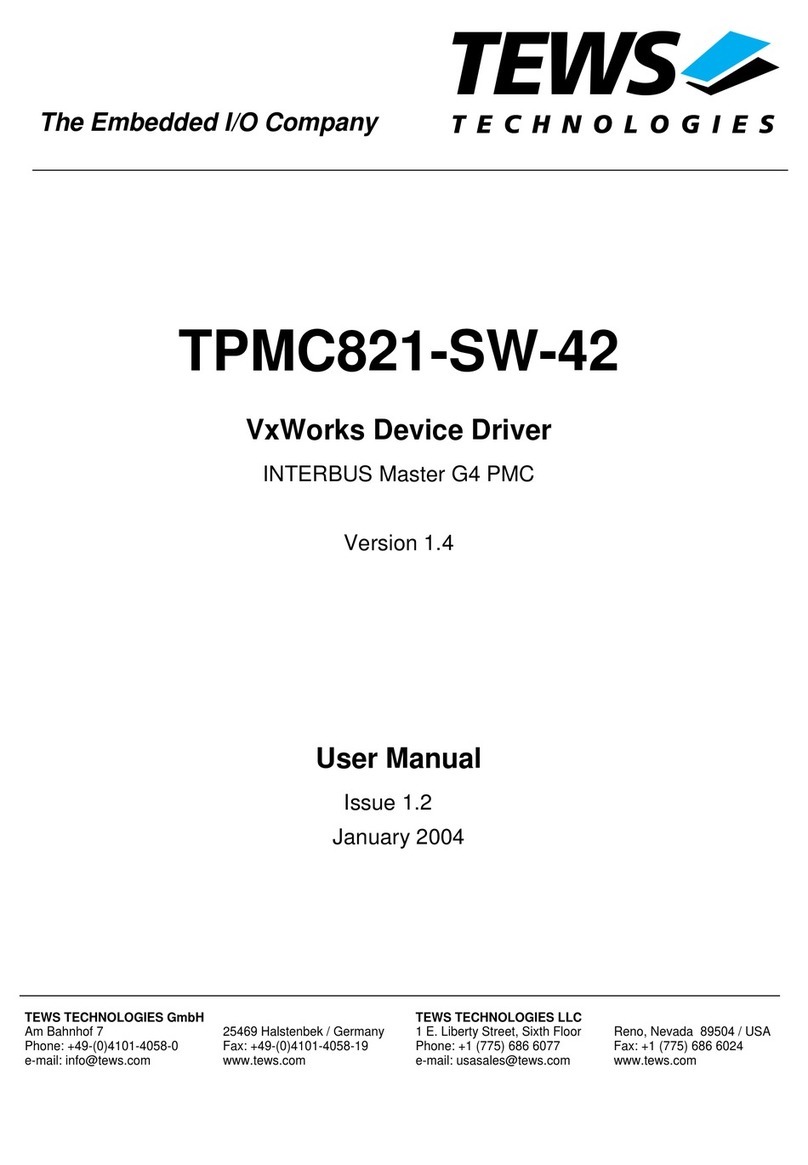
TPMC866-SW-42 - VxWorks Device Driver Page 3 of 37
Table of Content
1 INTRODUCTION.........................................................................................................4
2 INSTALLATION..........................................................................................................5
2.1 Include device driver in Tornado IDE project ..............................................................................5
2.2 Special installation for Intel x86 based targets............................................................................5
2.3 System resource requirement.......................................................................................................6
3 I/O SYSTEM FUNCTIONS..........................................................................................7
3.1 tpmc866Drv() ...................................................................................................................................7
3.2 tpmc866DevCreate() .......................................................................................................................9
4 I/O INTERFACE FUNCTIONS..................................................................................13
4.1 open() .............................................................................................................................................13
4.2 close().............................................................................................................................................15
4.3 read() ..............................................................................................................................................17
4.4 write() .............................................................................................................................................19
4.5 ioctl() ..............................................................................................................................................21
4.5.1 FIOBAUDRATE .............................................................................................................23
4.5.2 FIOFIFO.........................................................................................................................24
4.5.3 FIODATABITS ...............................................................................................................26
4.5.4 FIOSTOPBITS...............................................................................................................27
4.5.5 FIOPARITY....................................................................................................................28
4.5.6 FIOENABLEHWHS........................................................................................................29
4.5.7 FIODISABLEHWHS.......................................................................................................30
4.5.8 FIOSETBREAK..............................................................................................................31
4.5.9 FIOCLEARBREAK.........................................................................................................32
4.5.10 FIOCHECKBREAK........................................................................................................33
4.5.11 FIOCHECKERRORS.....................................................................................................34
4.5.12 FIORECONFIGURE......................................................................................................35
5 APPENDIX................................................................................................................36
5.1 Predefined Symbols......................................................................................................................36
5.2 Additional Error Codes.................................................................................................................37































